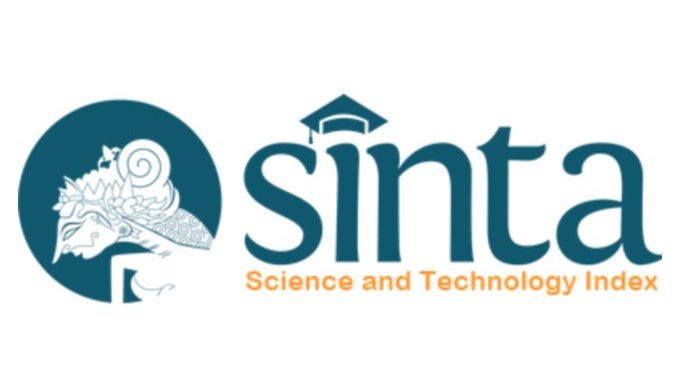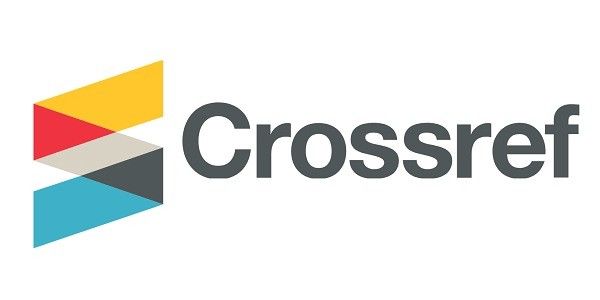Penyakit Autoimun dan Terapi Herbal: Peran Nanoteknologi terhadap Efektivitas Obat Herbal
DOI:
https://doi.org/10.55175/cdk.v46i3.499Keywords:
Herbal, miastenia gravis, nanoteknologi, penyakit autoimunAbstract
Penyakit autoimun adalah penyakit akibat kesalahan pengenalan sistem imun dalam tubuh, sehingga sel yang sewajarnya dilindungi malah dianggap musuh. Miastenia gravis (MG) merupakan salah satu penyakit autoimun yang mengenai neuromuscular junction (NMJ). Obat kortikosteroid seperti prednisolon, obat imunosupresan seperti azathioprine, bisa digunakan untuk membantu menekan respons imun tubuh yang berlebihan. Cholinesterase inhibitor, seperti pyridostigmine, dapat memperbaiki komunikasi antara sel saraf dan otot. Penggunaan jangka panjang obat-obat di atas dapat menimbulkan masalah yang berkaitan dengan efikasi, dosis serta efek samping, dan biaya pengobatan. Pada beberapa penelitian hewan coba, ekstrak herbal Acalypha indica Linn (AI) memperlihatkan efek hampir sama dengan pyridostigmine pada MG. Untuk meningkatkan efikasinya, ekstrak AI ini perlu diproses melalui pengembangan nanoteknologi. Penggunaan sediaan dalam bentuk nano diharapkan dapat meningkatkan efek terapeutik dan meminimalkan dampak negatif serta pembiayaan.
Autoimmune disease is an illness in which the immune system produces antibodies that attack normal body tissues. Myasthenia gravis (MG) is an autoimmune disease of the neuromuscular junction (NMJ). Corticosteroid drugs such as prednisolone, and immunosuppressant drugs such as azathioprine, can be used to help suppress the body’s excessive immune response. Cholinesterase inhibitors, such as pyridostigmine, can improve communication between nerve cells and muscles, but long-term use can cause problems related to efficacy, doses, side effects, and medical costs. Studies in experimental animals show the effect of Acalypha indica Linn (AI) extract is almost the same as pyridostigmine. In the future, research needs to be done to improve the efficacy of this drug through the development of nanotechnology.
Downloads
References
Abbas AK, Lichtman AH, Pillai S. Cellular and molecular immunology, 7th Ed., Saunders, ISBN 978-1-4377-1528-6, 2012.
Rose NR, Bona C. Defining criteria for autoimmune diseases (Witebsky’s postulates revisited) Immunol Today 1993;14:426-30.
National Institutes of Health. Autoimmune diseases coordinating committee: Autoimmune diseases research plan. National Institutes of Health, 2005.
Choo SY. The HLA system: Genetics, immunology, clinical testing, and clinical implications. Yonsei Med J. 2007; 48:11-23
Shiina T, Inoko H, Kulski JK. An update of the HLA genomic region, locus information and disease associations: 2004. Tissue Antigens 2004; 64: 631-49.
Stojanovich L, Marisavljevich D. Stress as a trigger of autoimmune disease. Autoimmunity Rev. 2008;7:209-13
Davis MM, Altman JD, Newell EW. Interrogating the repertoire: Broadening the scope of peptide–MHC multimer analysis. Nat Rev Immunol. 2011;11:551–8.
Eugene R, Zampieron, Ellen J, Kamhi RNb. Natural support for autoimmune and inflammatory disease. J Restor Med. 2012;1:38-47.
Stills HF, Bailey MQ. The use of Freund’s complete adjuvant. Lab Animal Sci. 1991;20:25-31.
Verschuuren JJ, Huijbers MG, Plomp JJ, Niks EH, Molenaar PC, Martinez-Martinez P, et al. Pathophysiology of myasthenia gravis with antibodies to the acetylcholine receptor, muscle-specific kinase and low-density lipoprotein receptor-related protein 4.Autoimmun Rev. 2013;12:918–23.
Coffman RL, Sher A, Seder RA. Vaccine adjuvants: Putting innate immunity to work. Immunity 2010;33:492–503.
Cole RN, Reddel SW, Gervásio OL, Phillips WD. Anti-MuSK patient antibodies disrupt the mouse neuromuscular junction. Ann Neurol. 2008; 63: 782-9.
Cole RN, Ghazanfari N, Ngo ST, Gervásio OL, Reddel SW, Phillips WD, et al. Patient autoantibodies deplete postsynaptic muscle-specific kinase leading to disassembly of the ACh receptor scaffold and myasthenia gravis in mice. J Physiol. 2010;588:3217-29.
Kawakami Y, Ito M, Hirayam M, Sahashi K, Ohkawara B, Masuda A, et al. Anti-MuSK autoantibodies block binding of collagen Q to MuSK. Neurology 2011;77:1819–26.
Romi F, Skeie GO, Aarli JA. Striational antibodies in myasthenia gravis reactivity and possible clinical significance. Arch Neurol. 2005;62:442-6.
Cragg GM, Newman DJ. Natural product drug discovery in the next millennium. Pharm Biol. 2001; 39 (Suppl. 1): 8–17.
Balunas MJ, Kinghorn AD. Drug discovery from medicinal plants. Life Sciences 2005;78:431 – 41.
Patwardhan B, Vaidya AD, Chorghade M. Ayurveda and natural products drug discovery. Curr Sci. 2004;86:789.
Sharma AT, Mitkare SS, Moon RS. Multicomponent herbal therapy: A review. Int J Pharm Sci Rev Res. 2011;6:185–7.
Samuelsson G. Drugs of natural origin: A textbook of pharmacognosy, 5th Swedish Pharmaceutical Press, Stockholm; 2004.
Yadav D, Suri S, Choudhary AA, Sikender M, Hemant, Beg NM, et al. Novel approach: Herbal remedies and natural products in pharmaceutical science as nano drug delivery systems. Int J Pharm Tech. 2011; 3: 3092–116.
Singh RP, Singh SG, Naik H, Jain D, Bisla S. Herbal excipients in novel drug delivery system. Int J Comprehensive Pharm. 2011; 2: 1–7.
Sungthongjeen S, Pitaksuteepong T, Somsiri A, Sriamornsak P. Studies on pectins as potential hydrogel matrices for controlled-release drug delivery. Drug Develop Ind Pharm. 1999; 25:1271–6.
Sneader W. Drug discovery: A history. Wiley; 2005.
Currier SJ, Johnston PD, Gorelick KJ. Complementary and alternative medicine-herbal medicines. Sci Med. 2000;7:40–3.
Bisht S, Feldmann G, Soni S, Ravi R, Karikar C, Maitra A, et al. Polymeric nanoparticle-encapsulated curcumin (“nanocurcumin”): A novel strategy for human cancer therapy. J Nanobio. 2007; 5: 1–18.
Zheng L, Song JF. Curcumin multi-wall carbon nanotubes modified glassy carbon electrode and its electro catalytic activity towards oxidation of hydrazine. Sens Actuators B Chem. 2009; 135: 650–5.
Berrih-Aknin S, Frenkian-Cuvelier M, Eymard B. Diagnostic and clinical classification of autoimmune myasthenia gravis. J Autoimmun. 2014;48–49:143–8
Robertson N. “Enumerating neurology”. Brain 2000;123: 663–4.
Phillips LH. 2nd The epidemiology of myasthenia gravis. Ann N Y Acad Sci. 2003;998:407–12.
Phillips LH, Torner JC. 2nd. Epidemiologic evidence for a changing natural history of myasthenia gravis. Neurology 1996;47:1233–8.
Aragones JM, Bolibar I, Bonfill X, Mummany A, Alonso F, Illa I. Myasthenia gravis. A higher than expected incidence in the elderly. Neurology 2003;60:1024–6.
Grob D, Brunner N, Namba T, Pagala M. Lifetime course of myasthenia gravis. Muscle Nerve 2008;37:141–9.
Patrick J, Lindstrom J. Autoimmune response to acetylcholine receptors. Science 1973;180:871–2.
Krisnamurti DGB, Hakim RW, Antarianto RD, Farida S, Purwaningsih EH, Purba JS. The role of Acalypha indica linn extract on heart rates with myasthenia gravis rat model. Asian J Pharm Clin Res. 2018;11:257-60.
Berrih S, Morel E, Gaud C, Raimond F, LeBrigand H, Bach JF. Anti-AChR antibodies, thymic histology, and T cell subsets in myasthenia gravis. Neurology 1984;34:66–71.
Roxanis I, Micklem K, Willcox N. True epithelial hyperplasia in the thymus of early-onset myasthenia gravis: Implications for immunopathogenesis. J Neuroimmunol. 2001;112:163–73.
Giraud M, Beaurain G, Yamamoto AM, Eymard B, Tranchant C, Gajdos P, et al. Linkage of HLA to myasthenia gravis and genetic heterogeneity depending on antititin antibodies. Neurology 2001;57:1555–60.
Gilhus NE, Verschuuren JJ. Myasthenia gravis: Subgroup classification and therapeutic strategies. Lancet Neurol. 2015;14:1023–36.
Berrouschot J, Baumann I, Kalischewski P, Sterker M, Schneider D. Therapy of myasthenic crisis. Crit Care Med. 1997;25(7):1228–35.
Skeie GO, Apostolski S, Evoli A, Gilhus NE, Illa I, Harms L, et al. Guidelines for the treatment of autoimmune neuromuscular transmission disorders. Eur J Neurol. 2006;13(7):691–9.
Sieb JP, Köhler W. Benefits from sustained-release pyridostigmine bromide in myasthenia gravis: Results of a prospective multicenter open-label trial. Clin Neurol Neurosurg. 2010; 112(9):781–4.
Purwaningsih EH, Ibrahim N, Zain H. The nerve protection and in vivo therapeutic effect of Acalypha indica extract in frogs. Med J Indones. 2007;19:96-102
Bhadoriya SS, Mangal A, Madoriya N, Dixit P. Bioavailability and bioactivity enhancement of herbal drugs by “Nanotechnology”: A review. J Curr Pharmaceut Res. 2011;8:1-7.
De Jong WH, Borm PJA. Drug delivery and nanoparticles: Applications and hazards. Int J Nanomedicine 2008;3(2):133-49.
Musthaba SM, Ahmad S, Ahuja A, Ali J, Baboota S. Nano approaches to enhance pharmacokinetic and pharmacodynamic activity of plant origin drugs. Curr Nanosci. 2009;5: 344-52.
Huang S, Chang WH. Advantages of nanotechnology-based Chinese herb drugs on biological activities. Curr Drug Metabolism. 2009;10:905-13.
Dong TP, Sung CH. Exuberence or bubble study of nano-based herbal medicines patients in the PR China. J Intellect Property Rights 2011;16:225-34
Downloads
Published
How to Cite
Issue
Section
License
Copyright (c) 2019 https://creativecommons.org/licenses/by-nc/4.0/

This work is licensed under a Creative Commons Attribution-NonCommercial 4.0 International License.





















